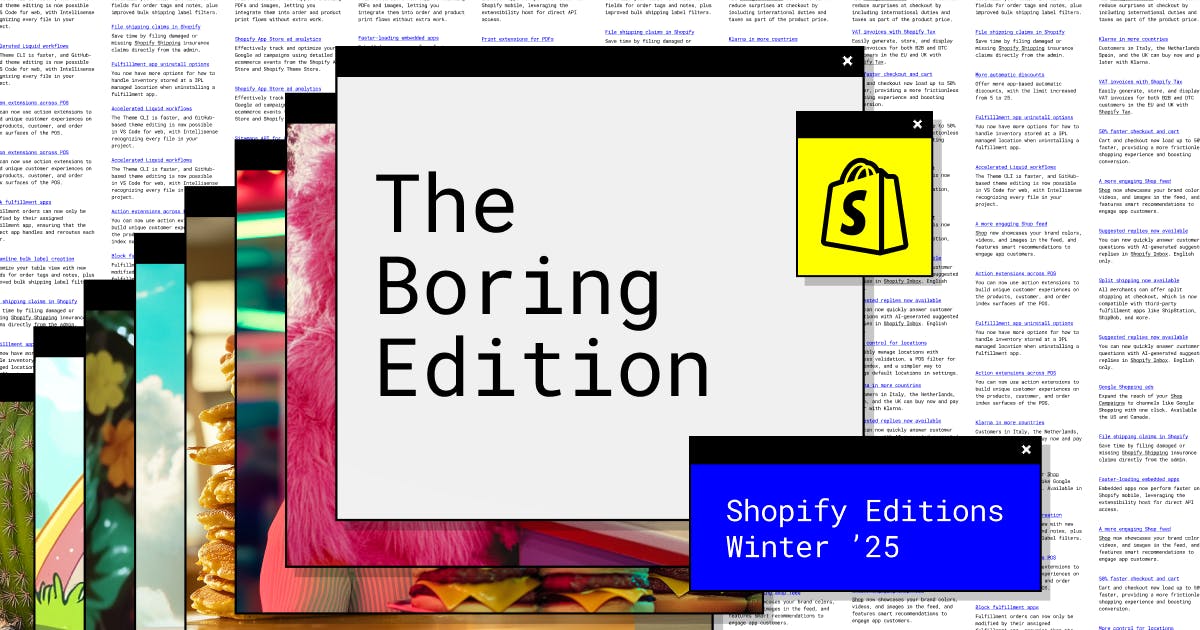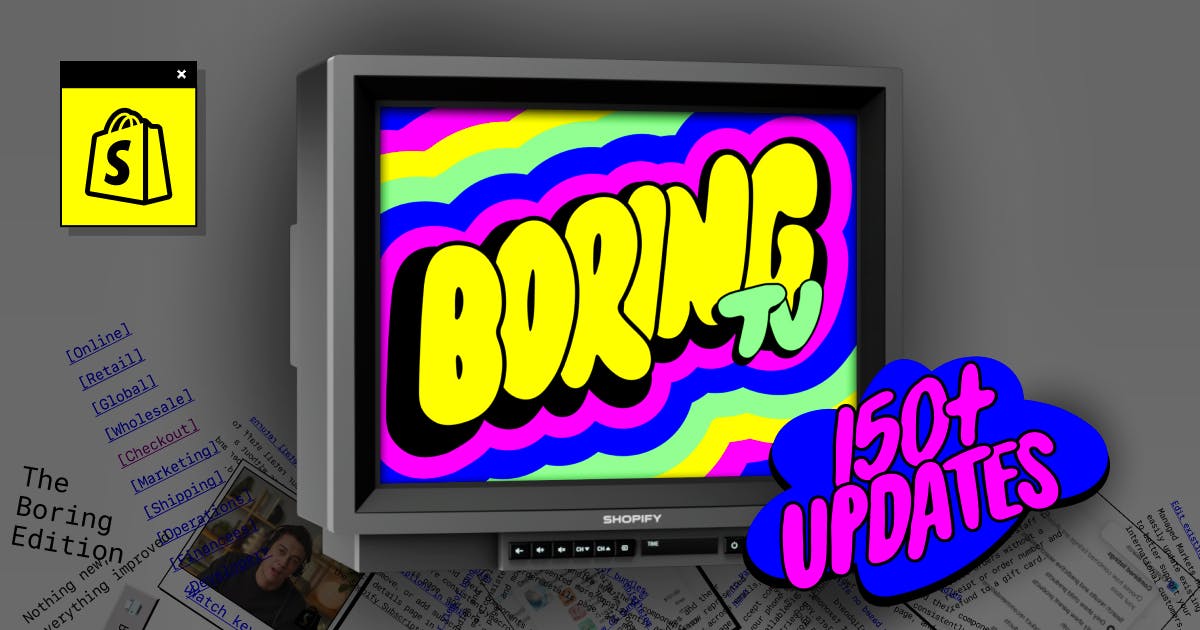How to find creative inspiration in ‘boring’ tech updates
Getting audiences excited about another software update can be hard work. But, as Shopify’s director of design and creative explains, leaning into the challenge can produce creative outcomes, for designers and audiences alike.

It’s rare that creative teams receive bold and daring briefs that challenge them to go against convention. The reality is that designers are far more frequently tasked with making a grand creative concept from something that in actual fact is quite dull.
It’s a situation many tech companies in particular are facing. Increasingly it can feel like upgrades to a new generation of a tech product or a platform have become iterative rather than game-changing.
But there’s beauty in the boring and honouring the dull. It’s an opportunity to showcase those small but important changes that could arguably make a bigger difference to the experience customers have with the product or service. The work of an impactful design team is fundamental to getting that message across.
Shopify, which provides commerce technology that powers retailers online and IRL, chose to highlight this tension in the theme of its Winter Edition, published in December. Every six months the commerce company launches a new instalment of Shopify Editions – a product showcase that celebrates its latest launches and updates; the new products to make retailers’ lives easier.
But this time it wasn’t about new products. It was about the ‘boring’ iterative improvements, like stability and optimising performance. Rather than try to hide the mundanity though, Shopify leant into it. “True originality often comes from embracing constraints rather than fighting them,” says Maggie Fost, director of design and creative at Shopify. “When we recognised this Shopify Edition would focus on performance improvements – traditionally ‘boring’ territory – we saw an opportunity to play with that tension directly. Our tagline says it all: ‘Nothing new. Everything improved.’”
To do this, Fost and her team leaned into the fundamental value of the updates, rather than trying to pretend they were something flashier than they are. “We built two parallel experiences: one that strips everything back to basic HTML, celebrating the elegant simplicity of good software, and another that explodes into AI-generated technicolor weirdness. It’s a reflection of Shopify itself – sophisticated technology that enables wild ambition.”
The team was inspired by old-school release notes, the utilitarian design of changelogs, and early web design such as Craigslist and 90s Yahoo.
For this project, Shopify was aware of the provocative nature of labelling their own work as ‘The Boring Edition’, which in fact allowed them to be playful with how the message was conveyed. “What might look like ‘dull design’ – The Boring Edition’s stripped-back HTML aesthetic – is a strategic choice that creates meaning through its very construction,” explains Fost. “We drew inspiration from early web design, not out of nostalgia but as a deliberate statement.
“But we also knew this wasn’t the whole story. The toggle to ‘not boring’ mode – unleashing 150-plus AI-generated video updates – isn’t just a gimmick. It’s a commentary on the duality of technical products: they need to be reliable and robust, yes, but they’re built by humans with wild imaginations and ambition. And building for the web is fun.”

“If anything, this project required more experimentation than a traditional campaign,” Fost continues. “We’re a creative team embedded in an engineering culture; our creative process is fundamentally about building things to understand what we want to build. When you’re working with a provocative concept like ‘boring’, you need to prototype extensively to find the sweet spot between restraint and delight. We want every web experience we create to reflect the level of care we put into our product.”
AI tools brought both scale and surprise. They allowed Fost’s small team to iterate well beyond the practical constraints of traditional video. Suddenly, they were able to conjure a flock of rapping flamingos for one video and cast a 1960s country band to sing about new email templates. “Seeing them light up when an AI suggestion sparked a better idea than they’d planned was the best,” says Fost. “I’ve never experienced more laughter and delight in creative reviews.
It’s also important to recognise design that might be perceived as boring is in fact at the heart of most successful product experiences. “A great product should be so elegant and simple that it doesn’t get in the way,” says Fost. “It should frictionlessly support the user experience every day. That’s not boring – it’s our responsibility to the millions of merchants who rely on Shopify to run their businesses. We’re acknowledging something our audience already knows: these essential improvements might sound dull on paper, but they’re actually what makes great technology feel like magic.”
So when it comes to inspiring design teams that might spend much of their time dealing with so-called boring projects, Fost suggests that leaders “challenge their assumptions” about what this actually means. “Technical sophistication often looks simple on the surface – that’s the point,” she says. “Start by understanding what your audience actually needs, then find creative ways to deliver it with intention and care.”
She adds: “Don’t be afraid to make bold choices in service of simplicity. We were able to execute an ambitious vision because we put tremendous intention into building our team: developers, designers, writers and motion artists who have both the creative freedom to take big swings and the technical chops to make them land.”









